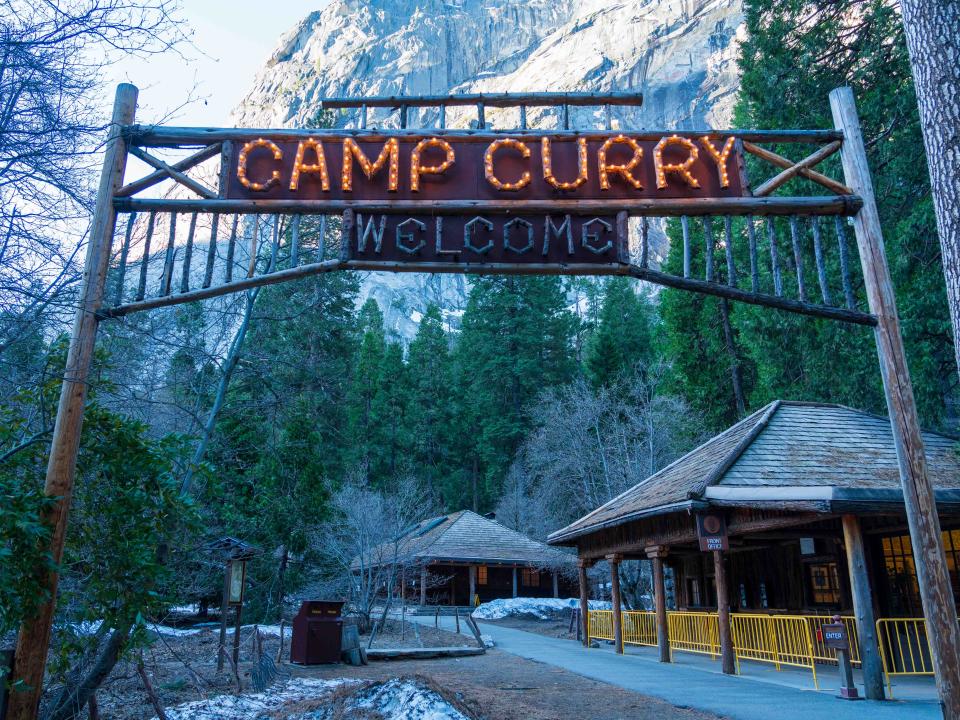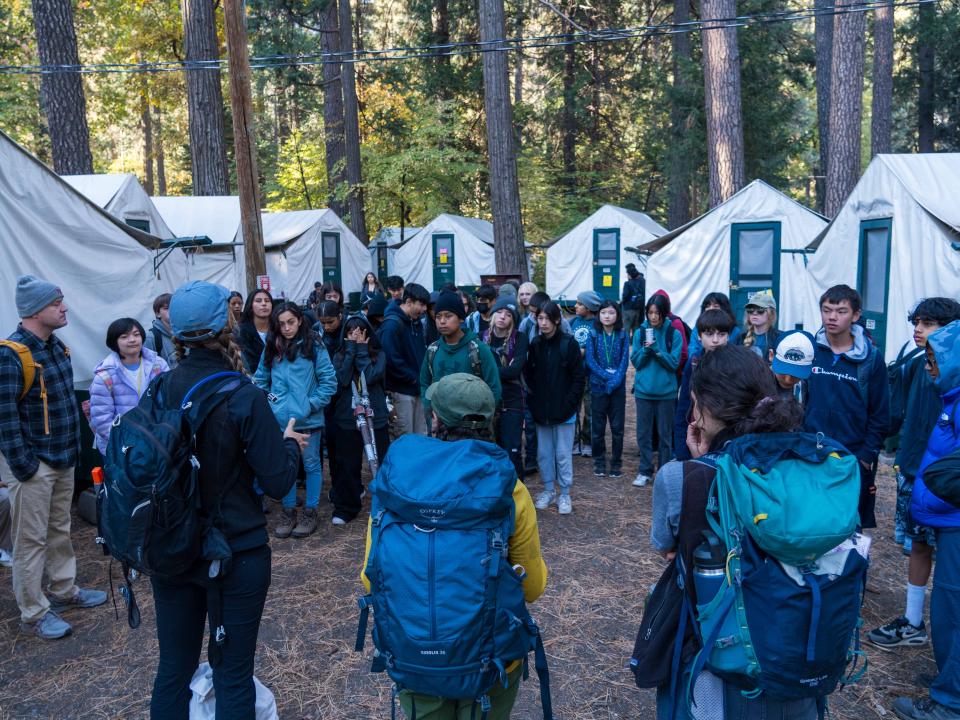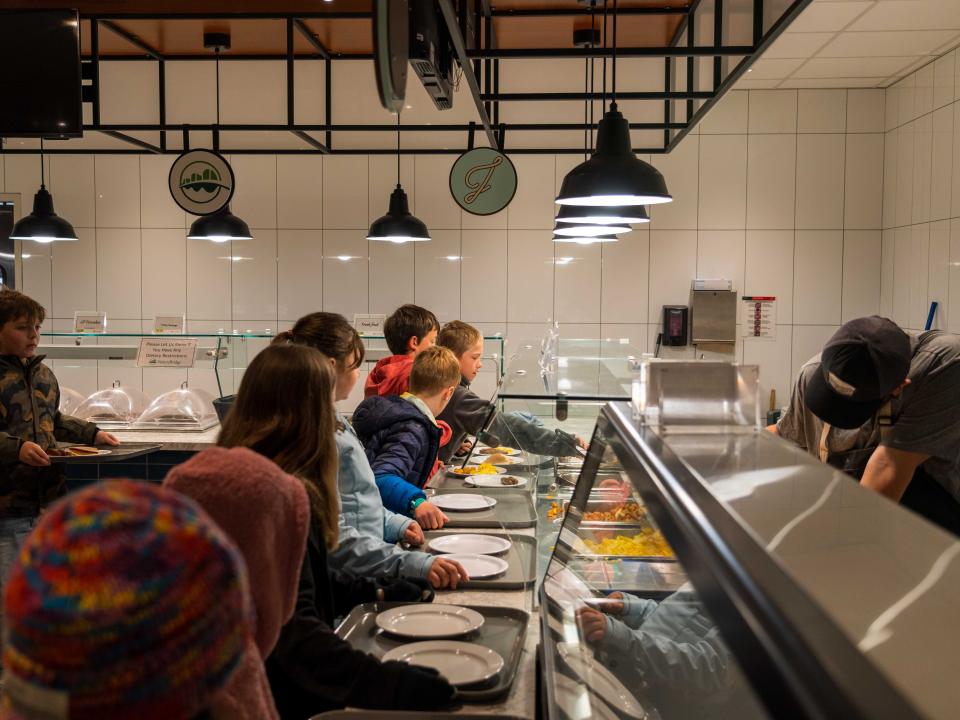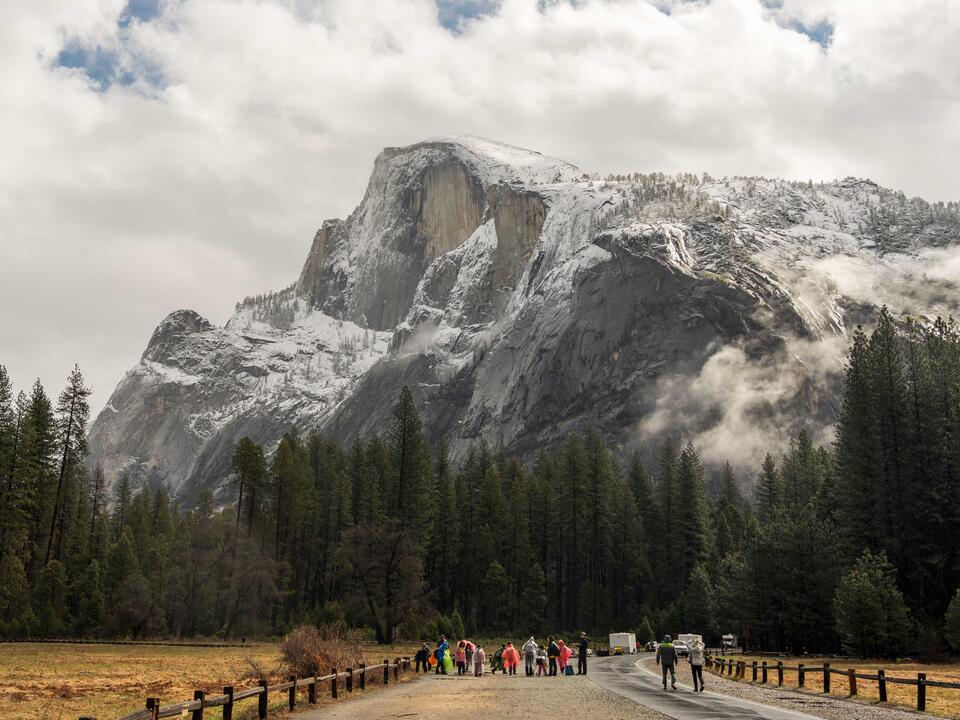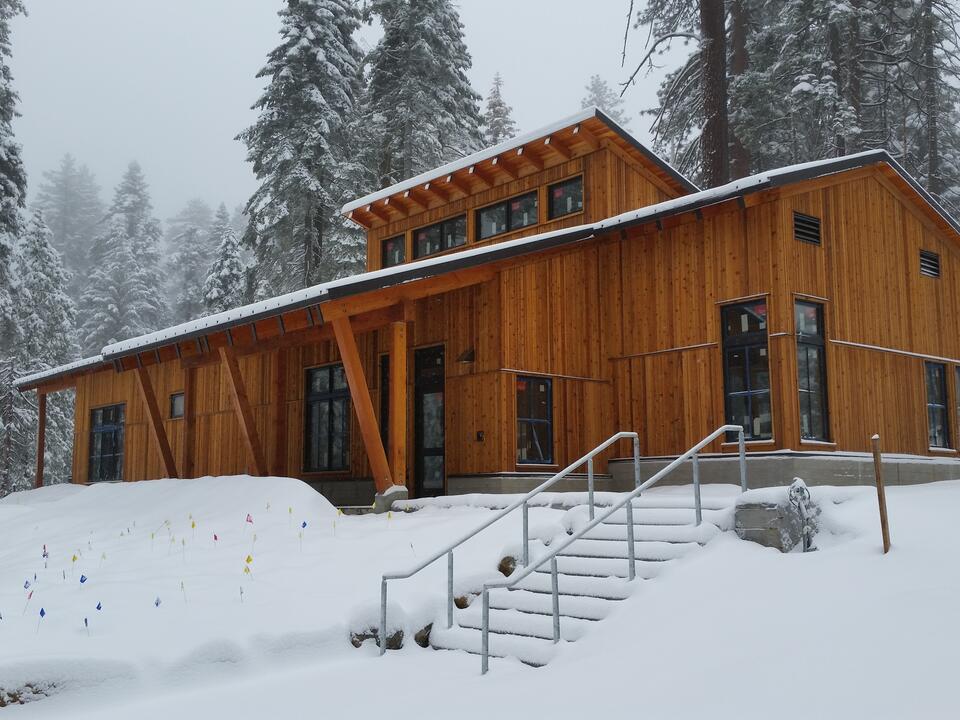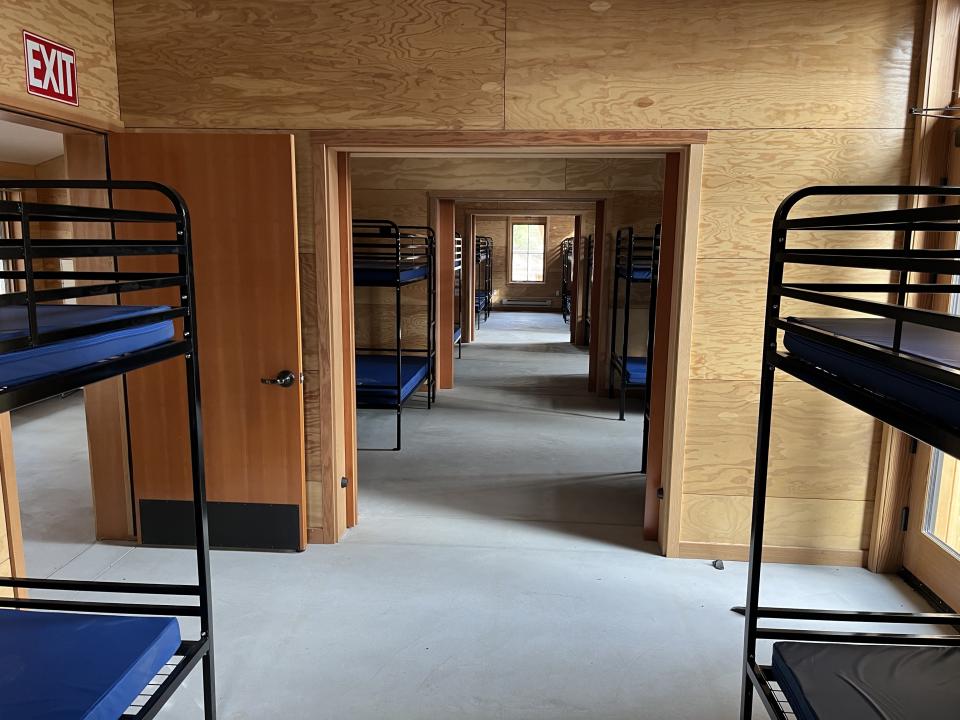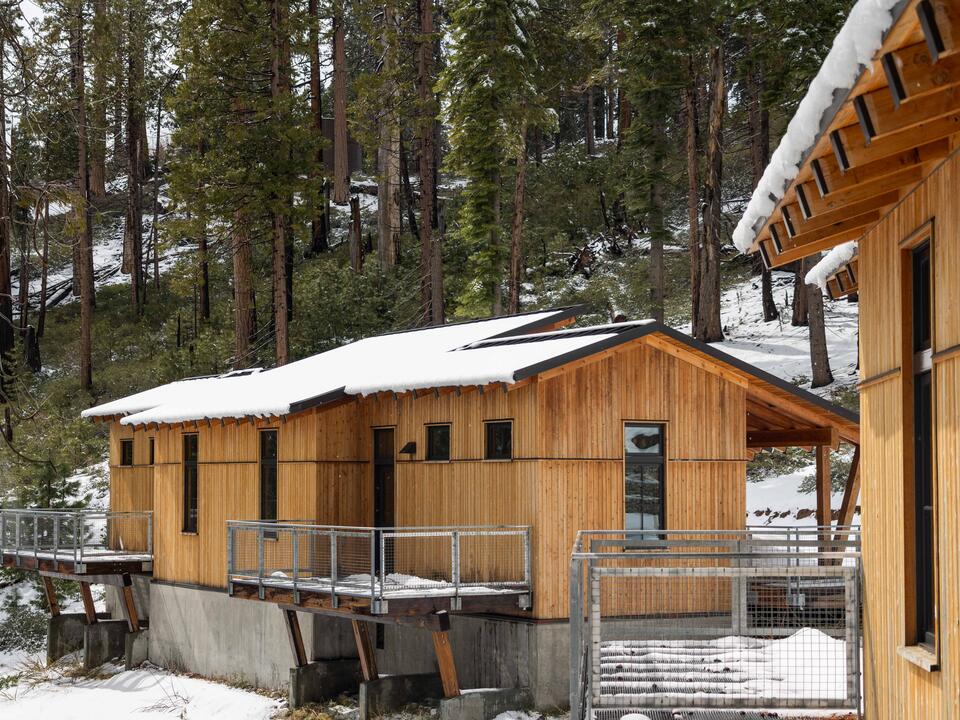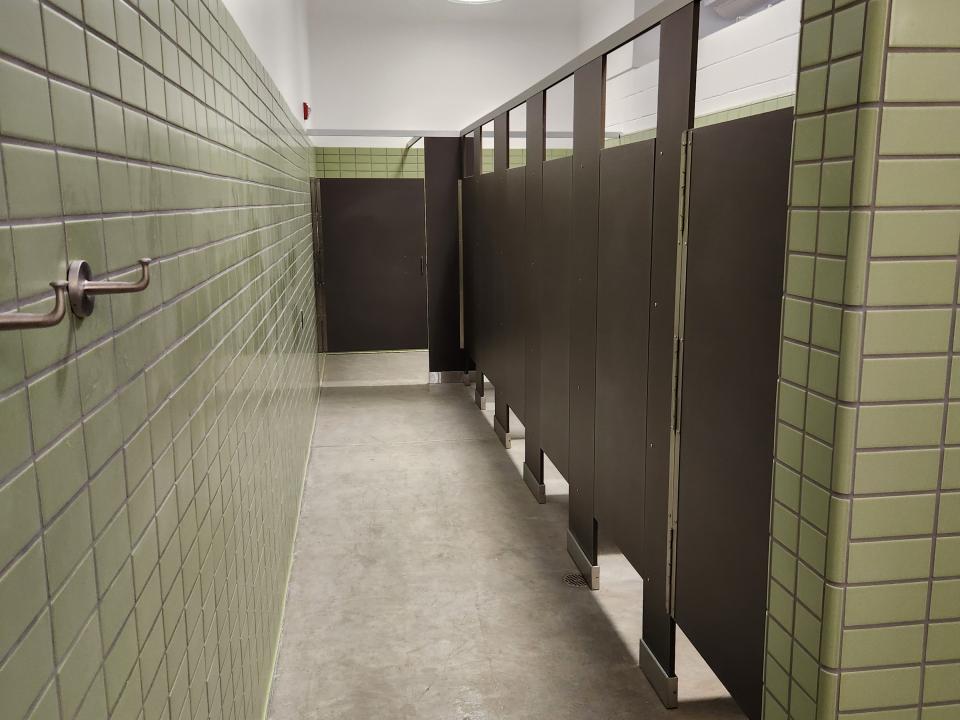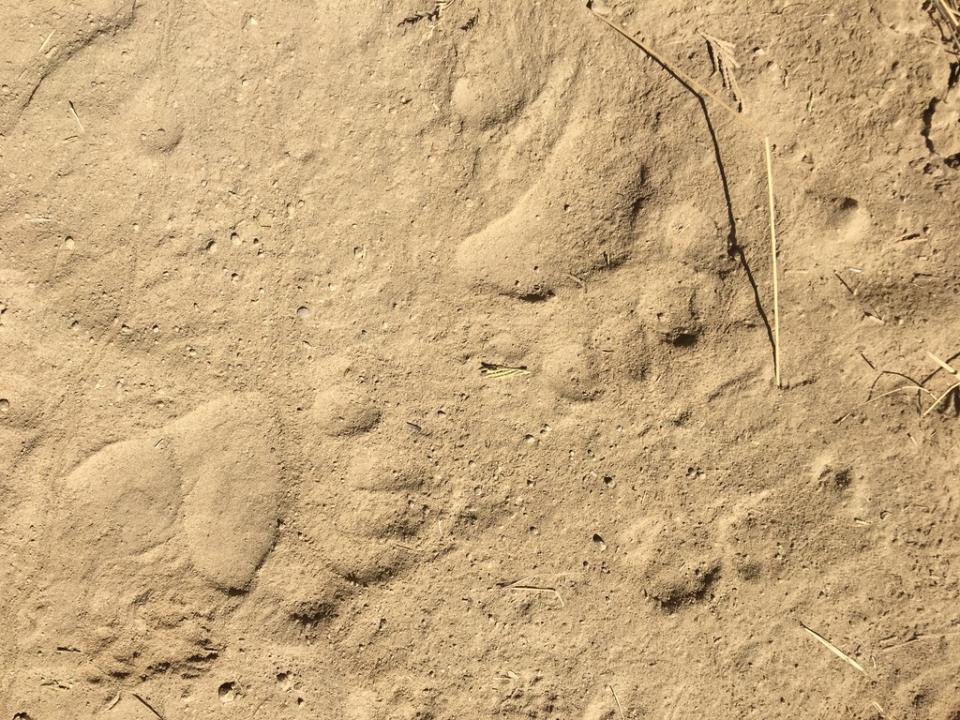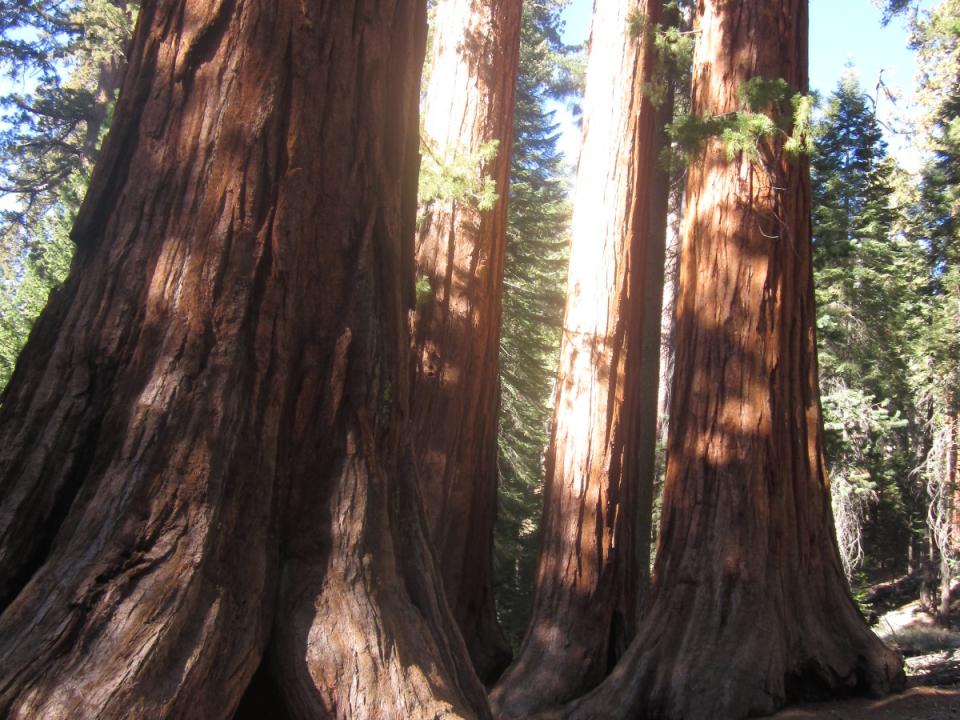Current Conditions
NatureBridge is excited to welcome students to our environmental science programs in Yosemite this Winter! Check back for seasonal updates as conditions evolve throughout the year.
Winter weather is a natural and critical part of California landscapes. Much of California relies on the Sierra Nevada snowpack to provide water year-round to ecosystems, communities, and agricultural lands located downstream. While adverse weather conditions are possible throughout the year, the greatest chance for snow/rain in Central California usually begins in early December and runs through late March or early April. NatureBridge closely monitors forecasted winter weather in the Yosemite area and associated road conditions and concerns. Take a look at Weather and Safety in Yosemite to learn more about how to monitor road and weather conditions.
The Yosemite Directors Team meets consistently to assess current conditions and ensure it is safe to run programs. Decisions are made in partnership with the National Park Service and other park partners. Should conditions necessitate a change in program, NatureBridge will be in touch with the School Group Coordinator with updates and next steps. Please reach out directly to your school contact for updates on potential program changes.
Helpful Yosemite National Park Links #
- Weather Conditions in Yosemite Valley (Curry Village, 4,000 ft. elevation)
- Weather conditions at the National Environmental Science Center (NESC, 6,000 ft. elevation)
- Yosemite National Park Road Conditions
- Yosemite Conservancy Webcams
- Yosemite National Park Service Instagram
- Weather and Safety in Yosemite
Program Activities #
NatureBridge educators will lead groups in engaging, collaborative, authentic learning experiences in a safe and supportive environment. Participants should be prepared to hike up to five miles a day. Days on trail may include:
- Conducting a hands-on science investigation, such as measuring the Sierra Nevada snowpack
- Experiencing the wintery landscape on crosscountry skis or snowshoes at Henness Ridge or Badger Pass
- Practicing biomimicry and learning from Yosemite’s flora and fauna about how to adapt and prepare for being outdoors in the wintery environment
- Snow play! Many students experience snow for the first time in Yosemite, and fun is one of the ways we keep warm
Curry Village Lodging #
Curry Village is located in the heart of Yosemite Valley. Iconic views of Yosemite Falls and granite monoliths can be seen in every direction. This lodging location is open to the public through October and periodically throughout the winter, mainly during holidays. So, participants will share spaces with park visitors, in addition to other NatureBridge students.
Students will sleep in heated tents with two single beds and one double bed (four students per tent). Chaperones are placed in tents next to students (three chaperones per tent). Bathrooms and shower houses are within walking distance from tents. Although there are linens, participants are encouraged to bring pillows, sleeping bags, and towels for extra comfort.
Refer to NatureBridge Yosemite FAQs for additional information on lodging at Curry Village.
National Environmental Science Center (NESC) Lodging #
The National Environmental Science Center (NESC) is located within the national park boundary on Highway 41, away from the hustle and bustle of Yosemite Valley. Designed to meet LEED Platinum standards, the buildings themselves offer teachable moments on how to tread lightly on the land.
The campus offers bunk-style lodging with two sets of dorms. Each bunkhouse can house up to 28 people and is equipped with balconies, mud rooms for storing wet/muddy gear, with sliding lockable doors that can separate the sleeping space into four separate rooms. Participants are required to bring pillows, sleeping bags, and towels as these items are not provided.
The shower house is located nearby and has two sides with individual shower and bathroom stalls. A private shower and bathroom are available in the dining lodge for participants who prefer not to use the gendered shower house.
The NESC's capacity is 45-50 participants in total. Depending on group sizes, a group may have exclusive use of the campus or share common spaces with another NatureBridge group.
Refer to NatureBridge Yosemite FAQs for additional information on lodging at the NESC.
Meals #
All meals during your program are provided by NatureBridge. Henness Ridge-based programs enjoy delicious, healthy meals prepared by NatureBridge cooks, while Yosemite Valley-based programs receive meals from Yosemite Hospitality. Breakfasts and dinners are served in the on-site dining hall and lunch is eaten out on trail. Most dietary restrictions can be accommodated. Refer to NatureBridge Yosemite FAQs for more details.
Prepare for Your Program #
Resources are available to prepare yourself and/or your student for a NatureBridge program. Our Students, Families & Chaperones page has a wealth of information including a list of forms required for all NatureBridge participants, student and adult chaperone expectations, a winter packing list, and links to other helpful resources.
- Hydration: Especially in the winter, it is extremely important to pack extra water bottles to ensure that participants have the ability to carry enough water to stay hydrated for a whole day in the field. We recommend a 2-3 liter capacity for carrying water.
- Cold Temperatures: As fall transitions into winter, you can expect the temperatures in the evenings, nighttime, and mornings to drop below 32 degrees Fahrenheit. Be sure to take a close look at the winter packing list (Spanish) and include a waterproof jacket and pants, warm and comfortable boots, warm pajamas, a warm hat, waterproof gloves, and extra layers to be prepared for all conditions.
- Bear Safety: A common question that NatureBridge staff receive from parents/guardians is “Are there bears in Yosemite?” The short answer is “YES!” Yosemite National Park is home to around 300-500 black bears. During student orientation, students learn about black bears and what they should do if they encounter one. Curry Village and the NESC are equipped with bear boxes where participants are instructed to put any food or “smelly” items to keep themselves (and the bears) safe. Bears can be active year-around and seeing a bear can often be the highlight of a student's time in Yosemite. We do everything we can to prepare them to have a positive experience. Visit the Yosemite National Park Bears page for more information.
- Road Conditions: Mountainous roads can often be snow packed and icy during winter weather events. Take a look at Weather and Safety in Yosemite to learn more about how to monitor road conditions and NPS/CalTrans chain restrictions.
